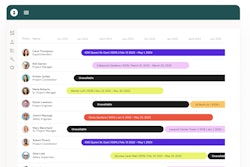
Help wanted signs are popping up everywhere, many offering $1,000 or more in signing bonuses. Restaurants and stores are limiting hours and posting signs about long wait times. Earlier this spring, the U.S. Labor Department reported 9.3 million job openings, an all-time record.
The worker shortage is affecting the service industry more than most other sectors right now, but construction companies are no strangers to the challenges presented by a tight job market. What can we learn from what’s happening today? Here are five suggestions for dealing with a labor shortage.
- Expand your criteria. Your ideal operator may be a seasoned pro with 15 years of experience across a variety of machine types, but is that really realistic right now? Be open to candidates with less experience who show a willingness to learn on the job. (Here are five skills to consider that aren’t time behind the controls.) The investment you make in training them now could pay off later.
- Look in-house. Before you post a job externally, consider your own internal candidate pool. Have any of your employees expressed interest in learning a new skill? Do some workers exhibit potential in areas beyond their current responsibilities? It may be easier to promote from within for a more skilled job, then advertise externally for an entry-level position.
- Get flexible. Take a lesson from the service industry and consider perks or benefits you haven’t offered before. Would a signing bonus set you apart in crowded job market? You can always make it contingent on a specific length of time worked. What about a more flexible work schedule — say four shifts of 10 hours versus five shifts of eight — or additional vacation time? A work-from-home option, even if it’s just one or two days a week, might appeal to back-office employees.
- Recruit where others aren’t. When everyone’s targeting the same pool of workers, it makes sense to look elsewhere. Older workers often are overlooked in job searches, but they can bring experience and leadership skills to your organization. Women aren’t always top of mind for typical construction jobs, but they’ve proven they can do the work as well as or better than their male counterparts. (Check out this all-female crew in the paving industry.) You may also want to consider tapping into the temp/freelance market or enlisting a staffing agency to help you find workers.
- Do a culture check. In a workers’ market, there’s little reason for employees to stay in jobs where they’re treated poorly. If your employees are leaving, maybe it’s time to ask why. Are you paying fairly compared to the rest of the market? Are your benefits up to snuff? Is your commitment to worker safety clear? Do you listen to employee feedback and take action on their concerns? Find out where you need to improve to make your company an “employer of choice.”
Given the challenges of finding skilled employees — especially equipment operators — in the construction industry, these aren’t just short-term tips to help you get through today’s labor shortage. They’re long-term strategies you can use to give your organization a permanent head start in the recruiting race.




















